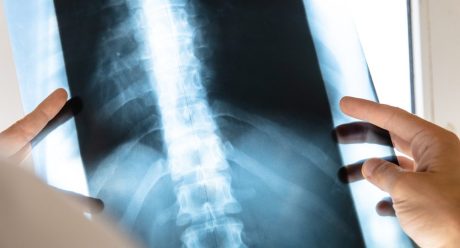Our client DT was working as a manual labourer for a water company when he suffered a spinal cord injury as a result of delay in treatment of cord compression in his cervical spine. As a result of his injury, he was unable to work and required lifelong care, therapies, and suitable housing.
Clinical Negligence senior associate Katherine Fitter acted for DT in his spinal cord injury claim, leading to a multi-million pound settlement.
Background
DT’s claim arose from the failure to advise him that he had spinal cord compression from cervical stenosis at levels C5/C6 in his spine. This led to a delay in treatment and a permanent spinal cord injury.
The stenosis was present and reported by a radiologist on a CT scan in 2014. The compression was not yet causing symptoms and was an incidental finding at that time; the claimant had suffered a fall and was being checked for traumatic injuries.
DT was discharged from hospital without follow up and remained unaware of the cord compression for three years until 2017, when he attended his GP complaining of pins and needles and numbness in his hands. He argued that had he been aware of the compression and been advised of the risk of developing related symptoms in 2014, he would have attended his GP at their first onset and not waited.
The claimant’s condition deteriorated, and he underwent two spinal surgeries in 2017. The surgeries were, unfortunately, not effective in alleviating his symptoms, and he was left with a permanent spinal cord injury classified as C4 ASIA D.
The legal case
This claim was robustly defended. In its defence, the defendant admitted the cervical stenosis had been identified on the CT scan of 2014 but argued that it was not mandatory to undertake any follow up or to advise the claimant about the risks of developing symptoms secondary to this in the future. The defendant also argued that even if the claimant had been aware, he would not have attended his GP any earlier.
On DT’s behalf, Stewarts continued to pursue the claim forcefully. The defendant later provided an amended defence admitting that the cervical stenosis present in 2014 had not been identified by the hospital’s neurosurgeon reviewing the scans. It was admitted that the claimant and his GP should have been warned about the symptoms associated with cervical cord compression. The defendant maintained that this breach of duty would not have significantly changed the claimant’s outcome.
Settlement
Despite the defendant’s stance following the exchange of witness and expert evidence, we were able to achieve a significant quantum settlement for the claimant to provide suitable accommodation, care, therapies and equipment for his lifetime. The settlement includes a periodical payment with an uplift at the age of 75 when it is anticipated the claimant’s care needs will increase. He also received a lump sum damages payment of £2m. It is anticipated the total capitalised sum he will receive based on his estimated life expectancy will be almost £4.4m.
The claimant was delighted with this outcome. Following the settlement, he moved from his current home to an adapted bungalow, which will maximise his independence.
Testimonial
DT says: “The settlement I received has greatly improved my life: I was able to move into a more suitable house and to buy more equipment to help me with everyday tasks.
“Katherine and the whole team were brilliant. They helped us every step of the way, keeping us updated and also explaining everything to us. We can’t thank them enough.”
______
Find out more about our expertise in supporting people following a spinal injury on our dedicated spinal cord injury claims page.
You can find further information regarding our expertise, experience and team on our Clinical Negligence page.
If you require assistance from our team, please contact us.
Subscribe – In order to receive our news straight to your inbox, subscribe here. Our newsletters are sent no more than once a month.






